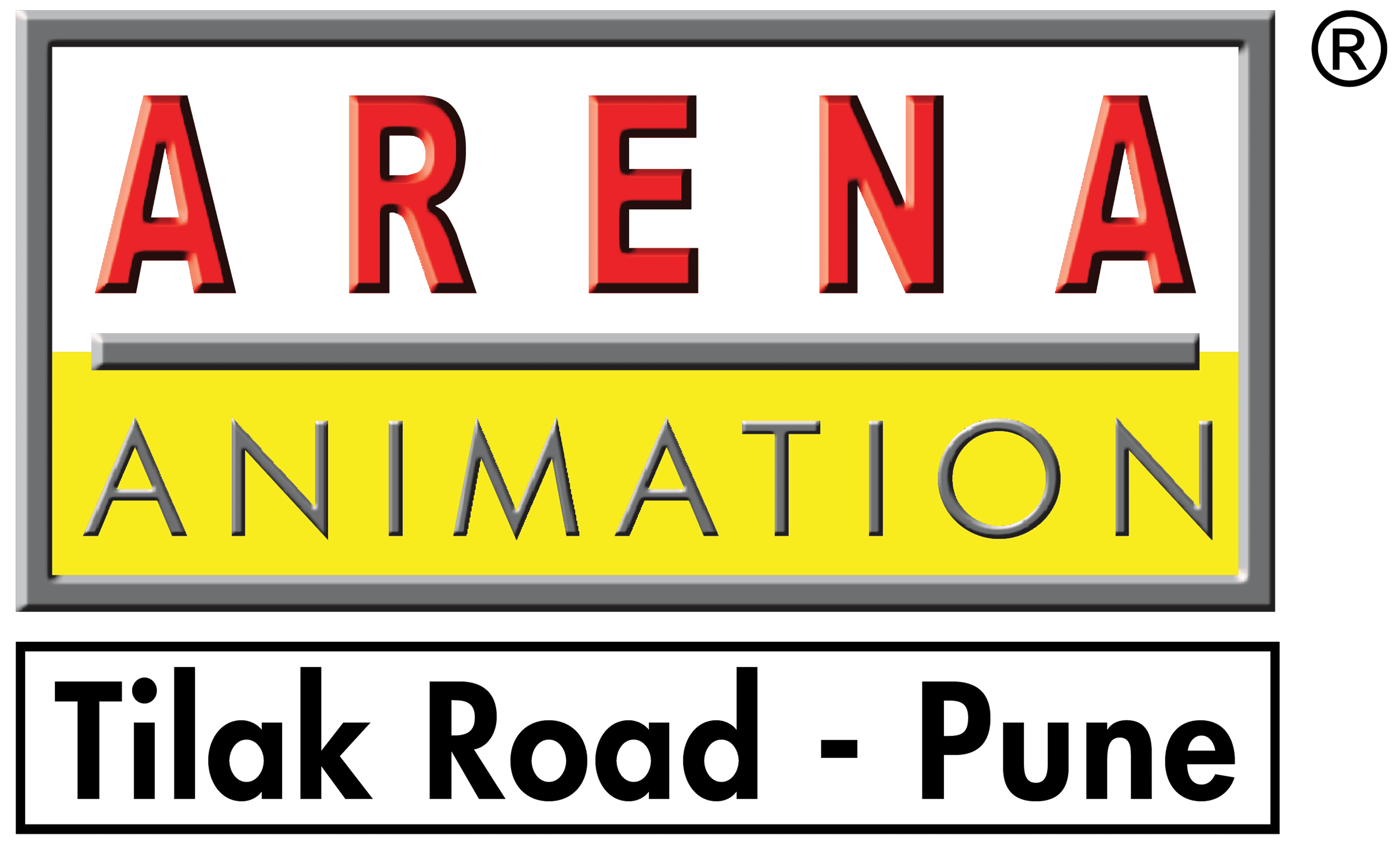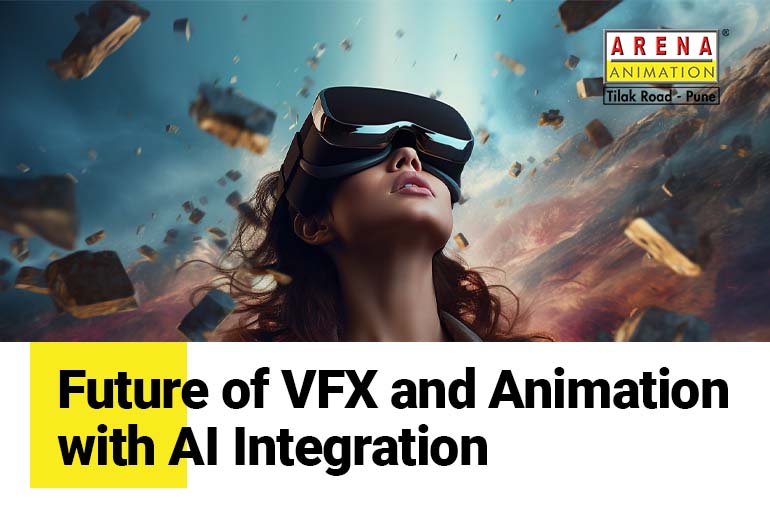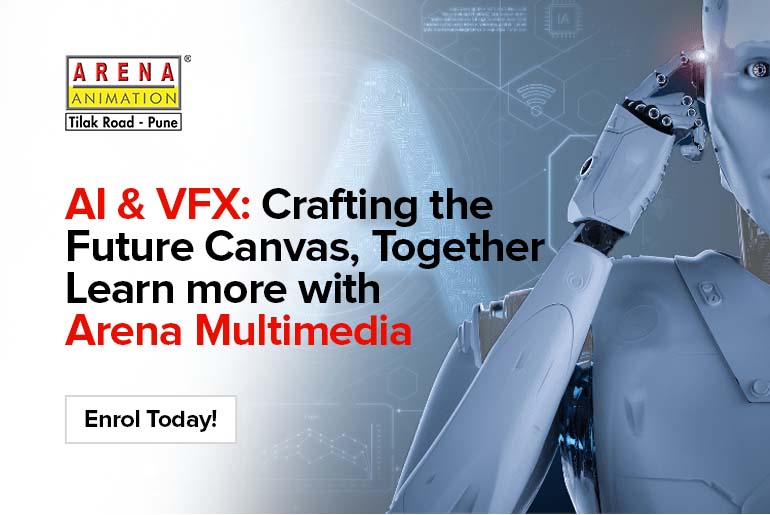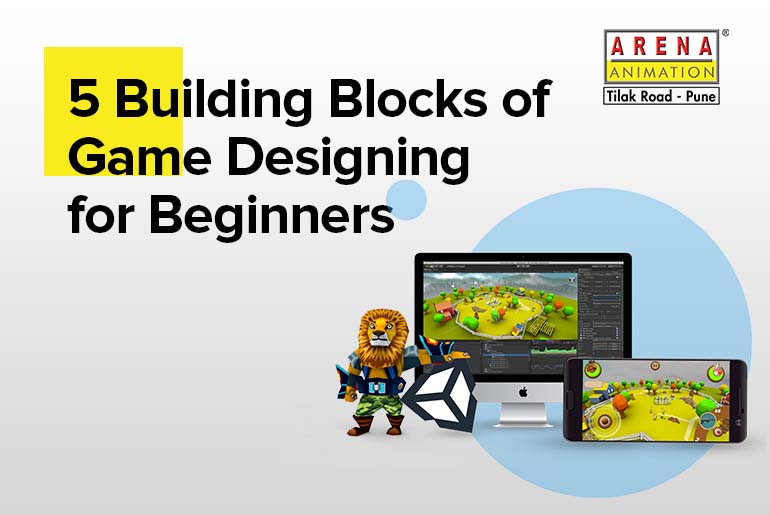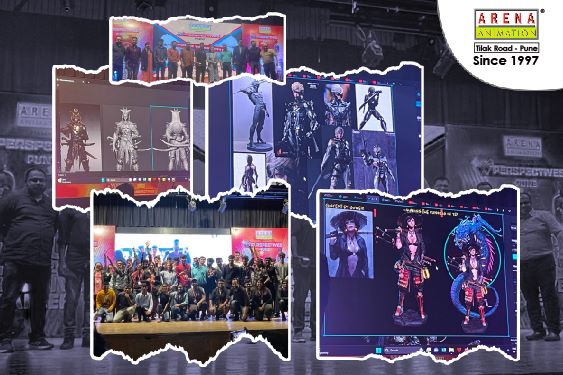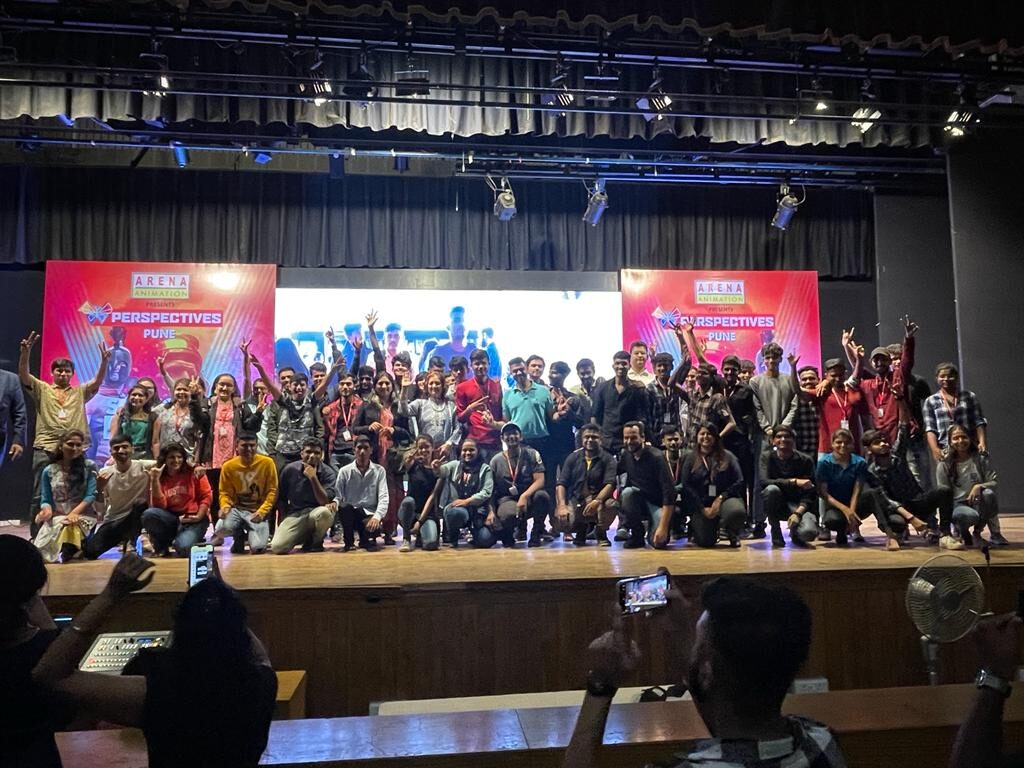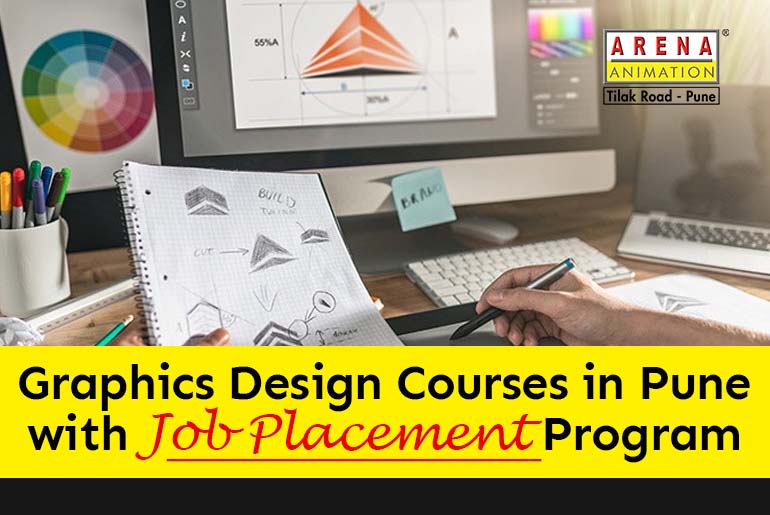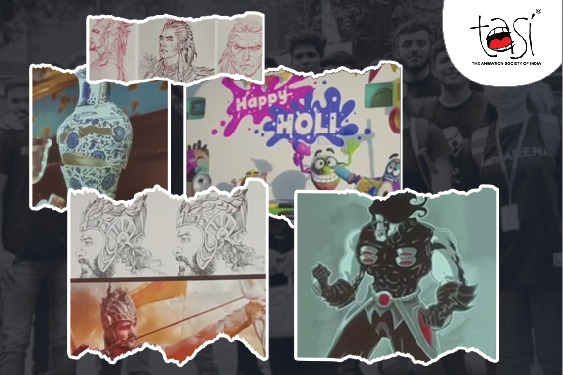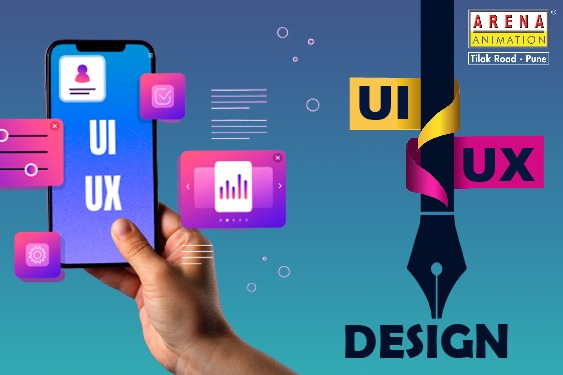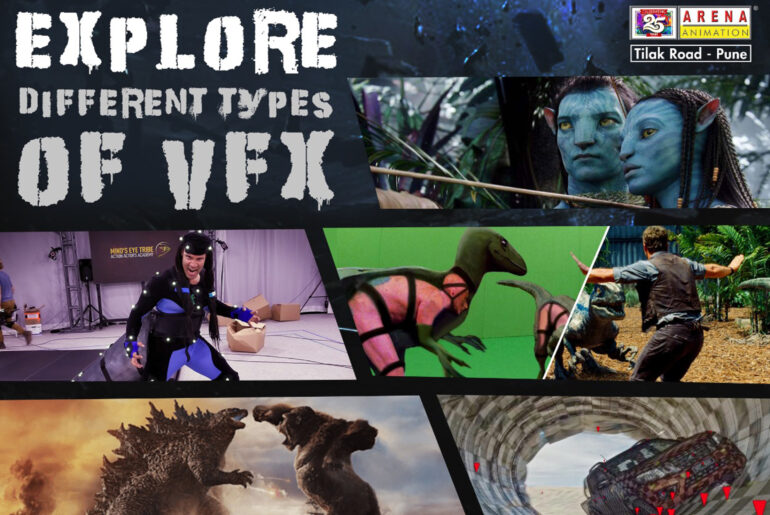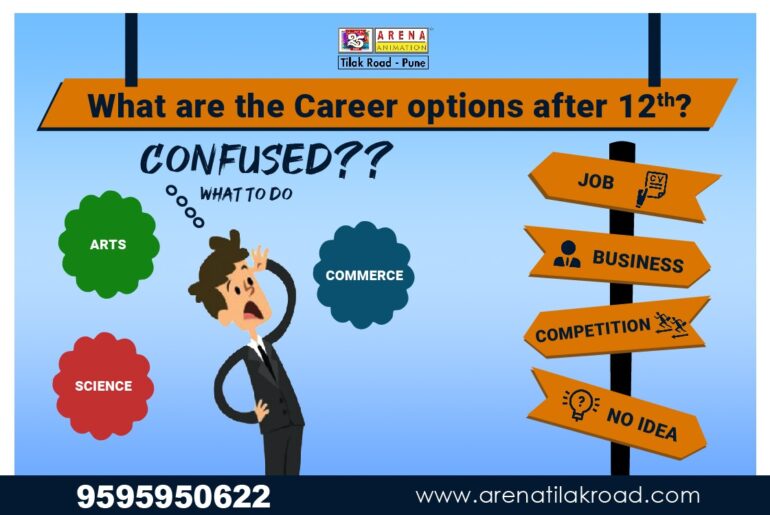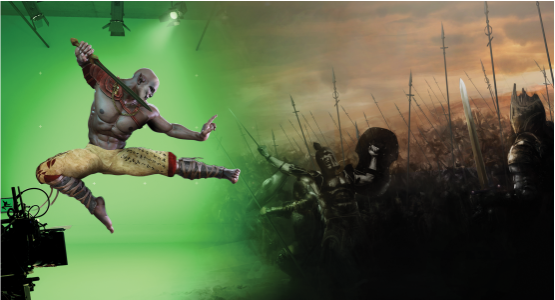In recent years, the visual effects (VFX) sector has been expanding. With the use of Artificial Intelligence (AI) and Machine Learning (ML), there have been numerous amazing advancements in vfx and animation and visual effects. As a result, it has become a heated debate topic whether AI will seamlessly integrate into the artistic process or completely replace the roles of VFX artists and animators.
This article explores the existing situation, future developments, and the complicated connection that may emerge between AI and the talented practitioners generating the visual wonders we see on screen, navigating the intricate junction of AI and creativity.
Who is a VFX Artist?
A Visual Effects artist (VFX) is a trained professional who creates and integrates computer-generated imagery (CGI) and visual effects into cinema, television, video games, and other multimedia works. VFX artists modify and enhance live-action films by combining artistic and technical skills to create seamless and appealing visual illusions. Their responsibilities include compositing, 3D modelling, texturing, lighting, and rendering, all to bring an inventive and magical thing to life on screen. VFX artists play a crucial role in the storytelling process, contributing to the immersive, often otherworldly experiences that fascinate consumers across a range of entertainment mediums.
Role of a VFX Artist in the Animation Industry
The key role of a VFX artist is as follows:
- Pre-Visualization: It is a process of creating basic visual mockups and layouts to anticipate the pre-production of a project. It helps us in assisting pre-visualization scenes.
- Matchmoving: It is the process of tracking precise spots and objects in a live-action plate to insert CGI features that blend seamlessly into the shot.
- Rotoscoping: The tracing and isolating of specific elements frame by frame and altering them is called rotoscoping.
- Matte painting: It is the process of painting over or extending backgrounds to create realistic scenes and backdrops.
- Lighting: it is used to produce realistic interactions between CGI and live-action elements by using computer-generated lighting.
- Simulation: Creating accurate simulations of dynamic elements such as cloth, liquid, smoke, fire, hair, etc.
The Rise of AI in VFX and Animation
The VFX industry is already using AI to enhance its effectiveness in creating motion series. The impact of AI on VFX and animation is significant. AI has become a vital tool for artists and studios, from improving production processes to enabling new forms of creative expression. Its ability to evaluate large datasets and perform tough tasks has opened doors to opportunities that were previously unimaginable.
AI is showing itself in a variety of creative applications in VFX and animation. For example, machine learning algorithms enable realistic character animations by learning and imitating human movement patterns. Deep learning technologies are used to improve image identification and create realistic visual elements that are seamlessly merged into live-action films.
As AI’s capabilities advance, doubts regarding its potential to alter the roles of VFX artists and animators arise. The possibility of automating certain tasks provokes debate about efficiency, but it also raises questions about the preservation of human creativity in the artistic process.
Potential Benefits of AI Integration in VFX and Animation
AI integration in Visual Effects (VFX) is altering the business, delivering a plethora of benefits that change the creative process. Here are some of the primary benefits driving AI’s disruptive impact in the field of visual effects:
- Enhanced Workflow Efficiency: AI automates labour-intensive operations like rotoscoping and object tracking, resulting in significantly shorter production times. Because of its efficiency, VFX artists can concentrate on creative aspects rather than tedious technical operations.
- Cost-Effectiveness: AI-assisted process automation results in cost reductions. Studios may streamline their resources, more effectively distribute finances, and even bring high-quality VFX within reach of smaller movies with limited budgets.
- Innovative Production Techniques: AI contributes usage of techniques that are beyond our boundaries. It opens up scope for innovative production techniques. It can enhance the quality of work from generative adversarial networks (GANs) creating realistic textures to predictive analytics assisting in pre-visualization.
- Augmented Creative Process: AI technologies serve as creative assistants, making recommendations and supplementing the artist’s vision. This collaborative approach has the potential to produce surprising and ground-breaking creative outcomes by promoting a harmonic blend of human brilliance and machine-generated suggestions.
- Data-driven decision-making: AI enables data analysis on a previously impossible scale, providing insights into audience preferences and patterns. This data-driven strategy enables filmmakers and studios to make educated decisions that align their creative efforts with audience expectations.
- Improved Quality Control: AI plays a vital role in quality control by initiating automation it can detect errors and implement the correction process. This helps in delivering a high-quality product free from inconsistency and imperfections.
- Accessibility and Inclusivity: AI’s cost-effectiveness and efficiency may democratize access to advanced visual effects capabilities. Smaller productions and smaller filmmakers can use AI to improve their storytelling powers, boosting industry inclusivity.
Challenges: AI’s Impact on the VFX Industry
AI integration with the VFX industry contributes a set of benefits for the artist, but it also offers new challenges that must be carefully considered. Here are some of the major issues confronting the VFX industry in the age of AI:
- Job Displacement Concerns: The use of AI to automate certain VFX operations raises concerns about job displacement within the industry. Artists and technologists may be concerned that rising reliance on AI would lessen the need for human abilities, limiting job options.
- Maintaining Artistic Integrity: Preserving the distinct flavour of human creativity has become a key problem. To avoid a homogenized and formulaic visual language, it is necessary to strike the correct balance between AI-driven efficiency and the delicate, emotive qualities of artistic expression.
- Ethical Considerations: The AI-generated material can raise ethical concerns. Copyright, ownership, and the proper use of AI tools in content creation necessitate a deliberate approach to guarantee the ethical implications are addressed.
- Learning Curve and Adaptation: The integration of AI into the VFX industry leads to the requirement of an enhanced learning curve. Studios and artists must upgrade their skills and adapt to new technologies, which can pose a significant challenge, especially for small studios.
- Quality Control and Unintended Outcomes: While AI can help with many elements of quality control, there is a risk of unforeseen consequences. AI algorithms may provide outputs that diverge from the desired artistic vision, necessitating close supervision to guarantee the final output is consistent with the creative objectives.
- Initial Setup Cost: Implementing AI technologies necessitates a capital outlay for infrastructure, software, and training. Smaller studios may have difficulty funding these upfront fees, perhaps producing a discrepancy in AI adoption based on production houses’ financial capabilities.
- Limited Understanding of AI Capabilities: A gap in understanding AI capabilities among VFX professionals can hinder its effective integration. Bridging this knowledge gap and fostering a comprehensive understanding of AI’s potential remain ongoing challenges for the industry.
- Lack of Standardization: Interoperability concerns can arise in the absence of industry-wide standards for AI products. Creating common frameworks and standards is essential for guaranteeing seamless collaboration and integration of AI solutions across studios and projects.
The Future Outlook: AI’s Evolution in the VFX Industry
The future of the Visual Effects (VFX) industry is defined by the complicated dance between human creativity and the developing capabilities of Artificial Intelligence (AI) as it continues its dynamic voyage into the digital frontier. Here’s a look at what the VFX landscape might look like in the future:
- Synergy, Not Replacement: The interdependency of human VFX artists and AI is going to deepen in the future. AI will act as a powerful tool to assist, rather than replace creative people. This collaboration will increase VFX’s strength and foster a new era of creativity.
- Specialized AI Solutions: The development of specific AI solutions for VFX work is anticipated to become more common. These task-specific AI technologies will boost efficiency and provide tailored assistance in areas like rendering, compositing, and character animation.
- Evolving Creative Workflows: AI integration will continue to transform traditional creative methods. Artists will collaborate with AI-powered assistants, allowing for more simplified workflows, faster iterations, and the exploration of innovative creative pathways.
- Ethical Guidelines and Regulations: Industry stakeholders are likely to adopt stricter norms and laws in anticipation of the ethical implications of AI in content creation. This proactive strategy strives to ensure appropriate AI use, deal with copyright concerns, and keep the creative process transparent.
- Continuous Learning and Adaptation: Because of AI’s dynamic nature, the VFX community must commit to constant learning and adaptability. Artists and professionals will participate in regular training sessions to stay up to date on evolving technology and maximize AI’s potential.
- Enhanced Audience Engagement: The power of AI to evaluate audience data will almost certainly improve filmmakers’ comprehension of viewer preferences. This knowledge can be used to customize visual elements, storytelling strategies, and overall cinematic experiences, resulting in increased audience engagement.
Conclusion
AI will be a collaborator, not a replacement, in the future of VFX and animation. While there will be many hurdles, the combination of human creativity with AI’s efficiency offers an era of innovation, pushing artistic frontiers without sacrificing the essence of human expression. The coming year will witness a transformative journey of interlinking between human intellect and AI to create a story of infinite intention and visual delights.
Arena Animation is delighted to incorporate cutting-edge technology into its VFX courses. Our objective is to equip students with an intensive learning experience that will keep them at the cutting edge of innovations in the dynamic world of Visual Effects.
Frequently Asked Questions
Is AI going to replace VFX artists?
The introduction of AI in VFX has enhanced the animation quality. It has transformed the technical aspects of visual effects production. However, the human creativity, ethical aspect, artistry, and problem-solving approach of a VFX artist will remain missing. As a result, AI cannot be projected to be a replacement for VFX; rather, it will act as a collaborator, assisting VFX artists in the creation of new creative ideas.
Will AI replace the animation industry?
Although AI is advancing considerably in animation, it can’t substitute 3D animators. Instead, the future suggests a partnership between AI-driven tools and human creativity. AI technology will stand as a valuable tool capable of significantly augmenting animators.
What is the future of animation and the VFX industry?
The VFX industry will witness a bright future in the coming years. With the rising demand for VFX professionals in film industries, marketing campaigns, and TV shows VFX artists will have a promising future.
Does VFX have a future in India?
No doubt! The VFX has a bright future in India. With the rise of the entertainment industry and the growing need for high-quality visual effects in films, ads, and digital media, the VFX sector is primed for major growth, bringing great employment possibilities and technological improvements.
Is AI a threat to animators?
No, AI is not a threat to animators; rather, it is a tool for assisting them. While AI might help with repetitive jobs, animators’ particular creativity, emotion, and storytelling talents are irreplaceable. The combination of human ingenuity and AI benefits the animation industry.
